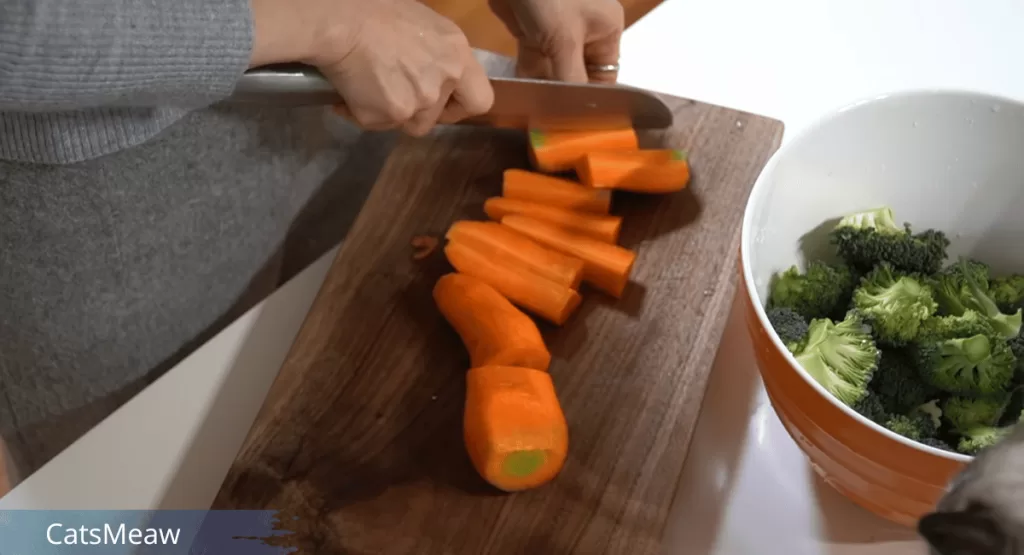Creating a DIY cat food recipe gives you control over what your feline friend consumes, ensuring a diet that meets their obligatory carnivorous needs. Whether you’re exploring how to make homemade cat food for nutritional purposes or to address health concerns, consulting a veterinary nutritionist can guide you in choosing the right ingredients.

By learning to prepare your own cat food, you can make meals that are high in protein and low in carbohydrates, perfectly suited for your cat’s dietary requirements. This step-by-step guide will navigate you through choosing ingredients, preparing, and storing homemade cat food efficiently.
Table of Contents
Understanding Your Cat’s Nutritional Needs
Understanding your cat’s nutritional needs is crucial when embarking on creating a DIY cat food recipe. Cats are obligate carnivores, which means their diet should be primarily composed of meat. Here’s a breakdown to help you get started:
- Essential Nutrients:
- Proteins: High-quality animal proteins like chicken, turkey, beef, and fish should form the bulk of the diet.
- Fats: Provide energy and support cell function. Look for sources rich in Omega 3 and 6.
- Vitamins and Minerals: Vital for overall health. Include cat supplements & vitamins taurine, vitamin E, and B-Complex.
- Special Considerations:
- Bones and Calcium: Essential for strong bones. If not feeding raw bones, consider adding ground bone or a calcium supplement to maintain the correct calcium-to-phosphorus ratio.
- Avoid Carbohydrates: Limit ingredients like corn, wheat, and rice. Cats have minimal nutritional requirements for carbohydrates.
- Consultation is Key:
- Always consult with a veterinarian before altering your cat’s diet, especially for cats with specific health conditions.
- Consider homemade food for cats with allergies, sensitivities, or specific preferences, ensuring all meals are balanced and follow vet-approved recipes.
By focusing on these foundational aspects, you can create a nutritious and balanced diet tailored to your cat’s needs, promoting their health and well-being.
Choosing the Right Ingredients
Choosing the right ingredients for your DIY cat food recipe is a pivotal step in ensuring your feline’s health and satisfaction. Here are key considerations:
- Protein Sources:
- Raw Feeding: Opt for chicken thighs with bone, whole carcass rabbit, or raw pork for their nutritional value. Be mindful of bacterial risks; thorough cooking of pre-ground meat can mitigate surface bacteria.
- Cooked Recipes: Consider cooked rabbit, poultry, or beef. Ensure all meat is cooked thoroughly to avoid any health risks.
- Supplements and Additions:
- Regardless of the recipe, supplements like taurine, vitamin E, and B complex are essential.
- For bone content, either incorporate raw bones safely or use alternatives like eggshell powder.
- Essential Tools and Safety:
- Equip your kitchen with a meat grinder, sharp knives, and proper storage containers.
- Prioritize safety by cleaning all surfaces and tools meticulously after preparation. Ensure any bone included is of safe size to prevent choking.
Remember, consultation with a vet is crucial to tailor the diet to your cat’s specific needs, especially when introducing homemade food.
Step-by-Step DIY Cat Food Recipes

Embarking on the journey of creating a DIY cat food recipe allows you to tailor your cat’s diet to their specific nutritional needs. Here’s a step-by-step guide to crafting nutritious meals for your feline friend:
Recipe 1: Classic Chicken and Rice Feast
- Ingredients: Chicken breast, rice, chicken broth, carrots, peas.
- Preparation: Cook chicken thoroughly, boil rice in chicken broth for flavor, steam carrots and peas, and mix all ingredients once cooled.
Recipe 2: Fisherman’s Delight
- Ingredients: Tuna, salmon, quinoa, fish oil.
- Preparation: Bake salmon and tuna gently, cook quinoa separately, and blend all ingredients with fish oil for a healthy shine to your cat’s coat.
Recipe 3: Veggie Packed Power Meal
- Ingredients: Sweet potatoes, carrots, green beans, quinoa, olive oil.
- Preparation: Steam all vegetables until tender, cook quinoa, mix with olive oil, and blend for a smooth consistency.
For raw feeding enthusiasts, ensuring the right balance of vitamins and minerals is crucial. Incorporate supplements like taurine and vitamin E as per your vet’s recommendation.
Related: Wet Food For Cats With Sensitive Stomachs
Always prioritize food safety by handling raw meat with care, keeping your preparation area clean, and storing meals properly. This approach not only offers a more time-efficient and cost-effective way to feed your cat but also ensures they receive all the necessary nutrients for a healthy life.
Storage and Serving Tips
When preparing homemade cat food, having the right equipment and tools is essential for a smooth process. You’ll need items such as a meat grinder, sharp knives, a meat cleaver, mixing bowls, poultry shears, a kitchen scale, large cutting boards, and appropriate storage containers. For safety and cleanliness, use latex or nitrile gloves and cover your working area with newspaper or plastic covers.
For storage and serving:
- Freezing and Refrigeration: Portion your homemade cat food into daily servings, using about 1/2 – 3/4 cup for an adult cat. Store these portions in the fridge or freezer in freezable plastic or glass containers, or Ziploc freezer bags. Remember, oxygen is the enemy of food storage, especially in the freezer, leading to freezer burn and spoilage. To prevent this, consider vacuum sealing your portions.
- Serving Tips: Thaw frozen cat food by placing the bag in warm or hot water for five to ten minutes. Avoid using a microwave if possible, as it can unevenly heat the food. If serving wet cat food, remember it should not be left out for extended periods to prevent spoilage and bacterial growth. For cats that refuse cold food, slightly warm the food before serving, but be careful not to overheat and destroy its nutritional value.
Transitioning your cat to a homemade diet can be done by mixing their favorite canned food into the raw or cooked mixture and gradually decreasing the canned food until it is eliminated. Remember, kittens can be fed homemade cat food from as young as 4 weeks, but this should not replace nursing. Adjust feeding frequency according to their age, with kittens needing more frequent meals.
